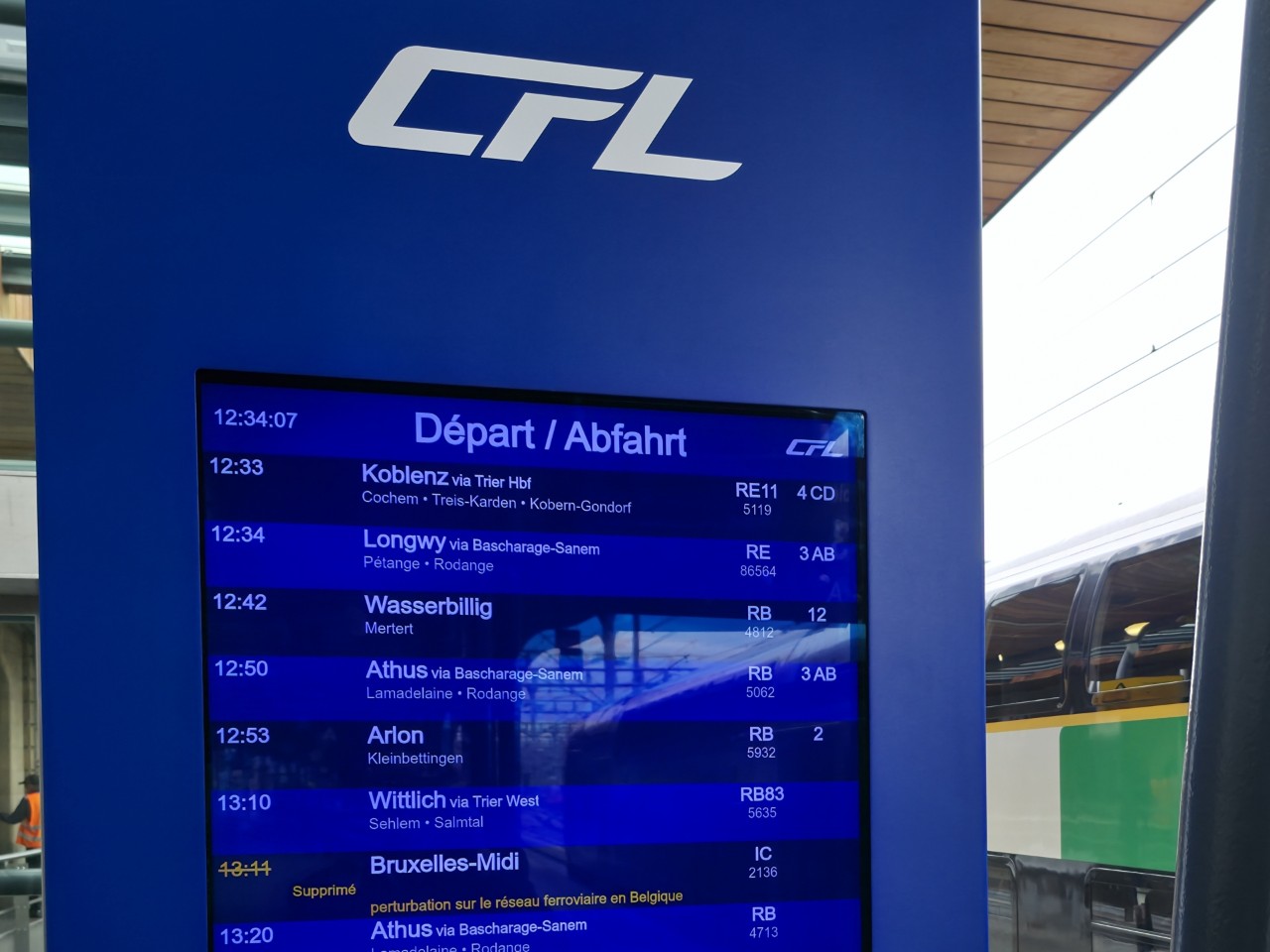Mobility for cross-border workers

People who commute daily from France, Germany or Belgium to work in Luxembourg are increasingly benefiting from a well-developed public transport network. At present, 38 cross-border bus and rail lines connect neighbouring regions with Luxembourg. The system is further supported by numerous Park & Ride facilities and a fleet of modern electric buses. Together, these measures make commuting not only easier, but also more sustainable. They encourage people to switch from cars to public transport, helping them save time and money while also reducing emissions.
38 cross-border bus routes
In Luxembourg, cross-border public transport is playing an increasingly important role in everyday life. With a population of around 700,000, Luxembourg is one of the most densely populated regions in Europe. Each day, a further 230,000 people commute here from neighbouring countries – including many employees of businesses based near the border. The creation of cross-border bus routes to complement the domestic network is therefore a necessity – something that is also reflected in the pace of expansion.
There are currently 38 bus lines that operate across the borders:
- France: Connections to Thionville , Longwy and other border municipalities (routes starting with 5, 6 or 7).
- Germany: Routes to Konz, Bitburg and Saarburg from Ettelbruck or Luxembourg City (route 180 and those starting with 3 or 4).
- Belgium: Destinations served include Arlon (950), Messancy (801), Bastogne (130) and Sankt Vith (173).
These routes are seamlessly integrated into Luxembourg’s domestic network and, since 2020, passengers have been able to travel on them free of charge up to the border. Beyond that point, the fares of the respective network operator apply. The only exception is route 502 to Roussy-le-Village – a pilot project launched by the Ministry to promote the use of public transport among French cross-border workers.
Train and Park & Ride – an efficient combination
Trains operate to Arlon (B), Gouvy (B), Volmerange (F), Audun-le-Tiche (F), Longwy (F), Nancy (F) and Trier (D).
On the Luxembourg side, as well as in neighbouring border regions, Park & Ride facilities are being gradually expanded to make public transport an even more attractive option. The following services are currently aimed at cross-border workers in particular:
- Troisvierges/Ulflingen
- Rodange
- Esch-Belval
- Frisange
- Longwy (F)
- Thionville (F)
- Roussy-le-Village (F)
Additional Park & Ride options are available on the national territory.
Apps to help you plan your journey
Users of the CFL app who are travelling at least 1.5 km from the car park can use CFL-operated Park & Ride facilities free of charge.
Want up-to-date timetables at your fingertips? The Mobilitéit.lu app (for Android and Apple) gives you easy access to live departure info and lets you track buses in real time.
Driving economic and sustainable growth through mobility
An efficient public transport network is crucial to Luxembourg’s development. It supports not only the wellbeing of residents and public transport users, but also the country’s economic growth and its efforts to reduce domestic CO2 emissions.
Since the introduction of free public transport, usage has risen significantly. For example, 31.7 million people travelled by tram and 31.3 million by train in 2024. This is hugely boosting the expansion of the public transport network, including large-scale projects such as the extension of rail connections towards France and the construction of new tram lines in the capital. In addition, an express link between Esch-sur-Alzette and Luxembourg City is being considered.
Electrifying the bus fleet is currently also high on the agenda. In 2024, 98% of newly registered buses were electric.
None of this is happening by chance. A reliable transport system is essential for ensuring people can get to work easily and on time. It also encourages more people to leave their car at home and use public transport instead. After all, fewer cars on the road means lower greenhouse gas emissions in the Grand Duchy. Currently, mobility still accounts for 26% of Luxembourg’s CO2 emissions. Although this figure is decreasing.
Overall, the efforts are aimed at keeping Luxembourg attractive to cross-border workers from neighbouring regions and avoiding mobility from collapsing. Together with other initiatives, such as the expansion of the cycling network, they are paving the way for a sustainable future.
Did you know?
90.9% of train journeys in Luxembourg run on time. The main exception is the line between Luxembourg City, Thionville (F) and Metz (F): passenger numbers doubled between 2005 and 2023, leading to chronic overcrowding. This line is now being upgraded and is due to reopen in 2028 with a fully modernised infrastructure and 50% more capacity.
Last update

